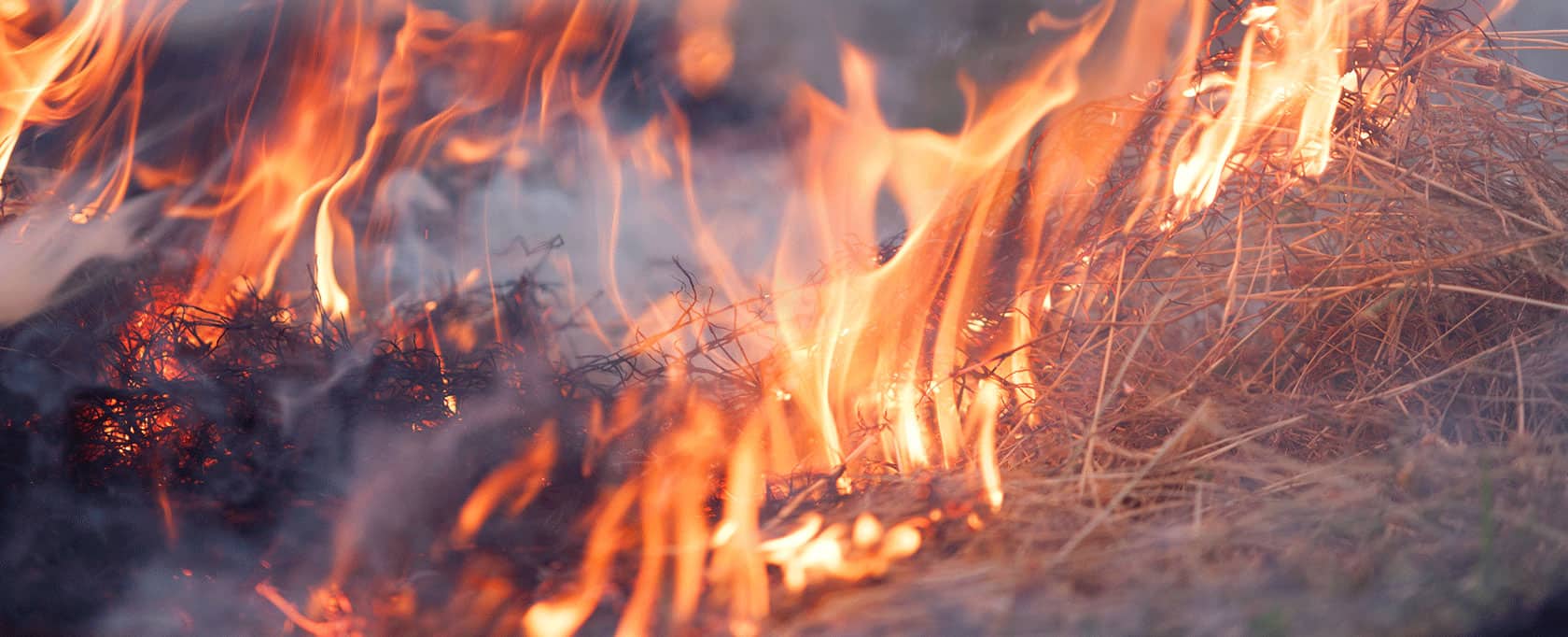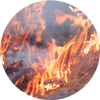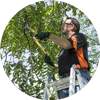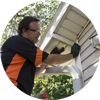Between 2009 and March 2019, more than 28,000 wildfires burned on state land in Florida.

Remember, even a small spark can start a fire that spreads quickly. Be sure to follow these safety measures year round.
- Never, ever leave a hot grill, smoker, or backyard fire pit unattended. Always be sure to have a water hose or fire extinguisher nearby, just in case.
- Do not park vehicles on dry grass or tall grass. The temperature of the exterior metal on catalytic converters on vehicles can reach up to 1,000 degrees F.
- Keep garages and storage sheds as clutter free as possible. Highly flammable items such as pesticides, paint, and gas cans for lawnmowers should be stored safely. Consider installing a fire-resistant closet or storage unit for added protection.
Make Your Home Firewise
Based on research by the U.S. Forest Service, a home’s roof and the 30 feet surrounding the structure are most critical when it comes to brush and wildfires. Keeping these areas as clear as possible can make all the difference for firefighters trying to save your home.
Here are some ways to reduce your risk.
 CLEAR: Be sure to remove dead leaves and pine needles from roofs, gutters, decks, patios, and fence lines. Wood piles and flammable landscaping material, such as some types of mulch, should be at least five feet away from your home’s foundation. Consider replacing mulch with rock or gravel, if possible. Be sure that landscaping—greenery and the lawn—is healthy and well-irrigated.
CLEAR: Be sure to remove dead leaves and pine needles from roofs, gutters, decks, patios, and fence lines. Wood piles and flammable landscaping material, such as some types of mulch, should be at least five feet away from your home’s foundation. Consider replacing mulch with rock or gravel, if possible. Be sure that landscaping—greenery and the lawn—is healthy and well-irrigated.
 TRIM: Avoid overhanging branches, plus trim back shrubs. Reduce the chances of fueling embers by thinning out trees to leave up to 15 feet between tree crowns. The Florida Fire Service also recommends trimming tree limbs so they are between 6 and 10 feet high.
TRIM: Avoid overhanging branches, plus trim back shrubs. Reduce the chances of fueling embers by thinning out trees to leave up to 15 feet between tree crowns. The Florida Fire Service also recommends trimming tree limbs so they are between 6 and 10 feet high.
 SEAL & CLOSE: Some homes are damaged by wildfires as a result of wind-born embers getting inside through exterior attic vents, pet doors, or other unsealed openings such as the area beneath decks. Besides clearing the area around your home, periodically check to be sure openings are properly sealed or screened.
SEAL & CLOSE: Some homes are damaged by wildfires as a result of wind-born embers getting inside through exterior attic vents, pet doors, or other unsealed openings such as the area beneath decks. Besides clearing the area around your home, periodically check to be sure openings are properly sealed or screened.
Learn more about Firewise landscaping and home construction from the Florida Department of Agriculture and Consumer Services. Also, here’s an interactive map showing current Florida wildfires. The National Fire Protection Association provides helpful tips, plus several educational resources such as the Firewise Toolkit and a Homeowners checklist.
Sources: USDA National Conservation Service, U.S. Fire and Forest Services, and the National Fire Protection Association.